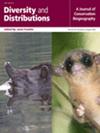Metabarcoding Unveils the Diversity and Dynamics of In Situ Diet and Symbionts Associated With Copepods in Chinese Coastal Waters
Abstract
Aim
Copepods are the key secondary producers in marine ecosystems, yet their in situ diet and symbionts remain underexplored due to technical challenges, limiting our understanding of their population dynamics and ecological functions. Using DNA metabarcoding, we jointly characterised the natural diet and symbionts of copepods across Chinese coastal waters, aiming to unveil their diversity, dynamics, and ecological drivers under various environmental conditions.
Location
Three coastal regions of Chinese seas: Qinhuangdao coastal waters (the Bohai Sea), the South Yellow Sea, the Yangtze River estuary and its adjacent waters.
Methods
Copepods were sorted and pooled by species for DNA extraction. The 18S rDNA of diet (gut content) and symbiont were amplified using modified copepod-excluding eukaryote-common primers and subjected to high-throughput sequencing. Analyses covered OTU-based diversity, feeding selectivity, host preference, and environmental drivers. Co-occurrence network analysis characterised the potential association between prey and symbionts. Symbiotic ciliate genetic diversity was assessed via phylogenetic reconstruction.
Results
Our protocol effectively suppressed amplification from 13 copepod species while capturing all eukaryotic supergroups spanning over 30 phyla. Diverse diet and symbionts are associated with copepods, including taxa unreported in copepods or Chinese waters. Environmental filtering, rather than copepod identity, primarily shaped diet and symbiont communities, and prey-symbiont associations also contributed. Copepods exhibited significant trophic plasticity, evidenced by wide feeding selectivity ratios across samples. Nine symbiotic ciliate ribogroups were revealed and unevenly distributed among hosts and regions, suggesting host specificity or environmental preference.
Main Conclusions
Our findings demonstrate the feasibility of DNA metabarcoding for profiling copepod natural diet and symbionts. We unveiled their higher diversity and dynamic variability than previously recognised, positioning copepods as amplifiers of hidden marine microbial diversity. Protecting the intricate trophic and symbiotic network associated with copepods is critical for future marine ecosystem conservation.


 求助内容:
求助内容: 应助结果提醒方式:
应助结果提醒方式:


